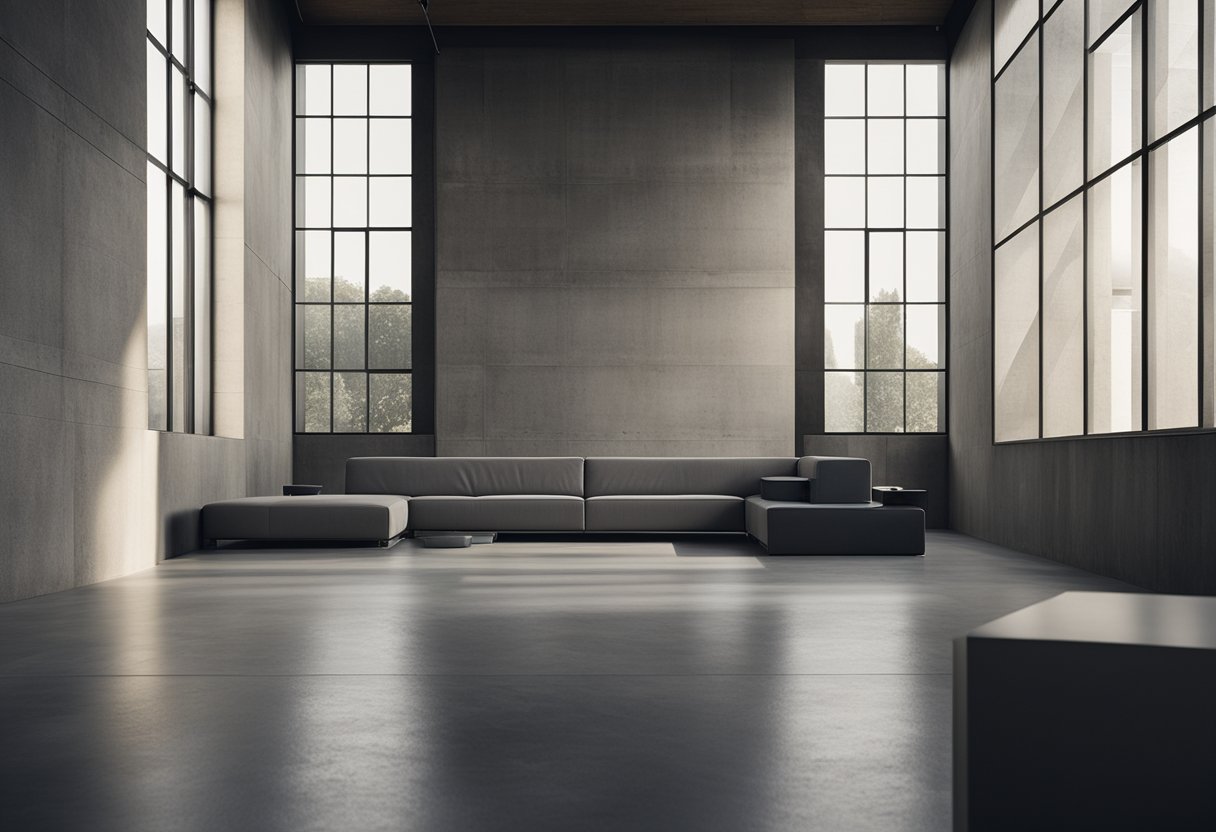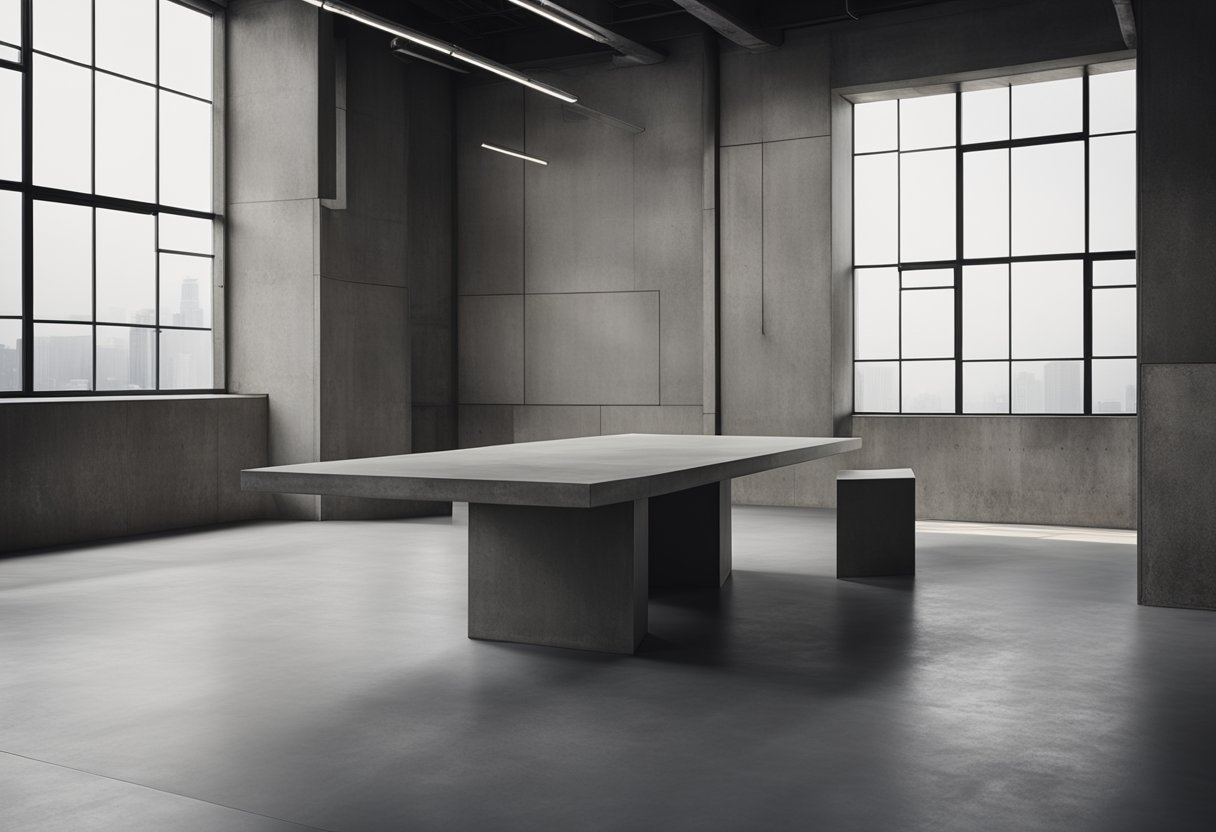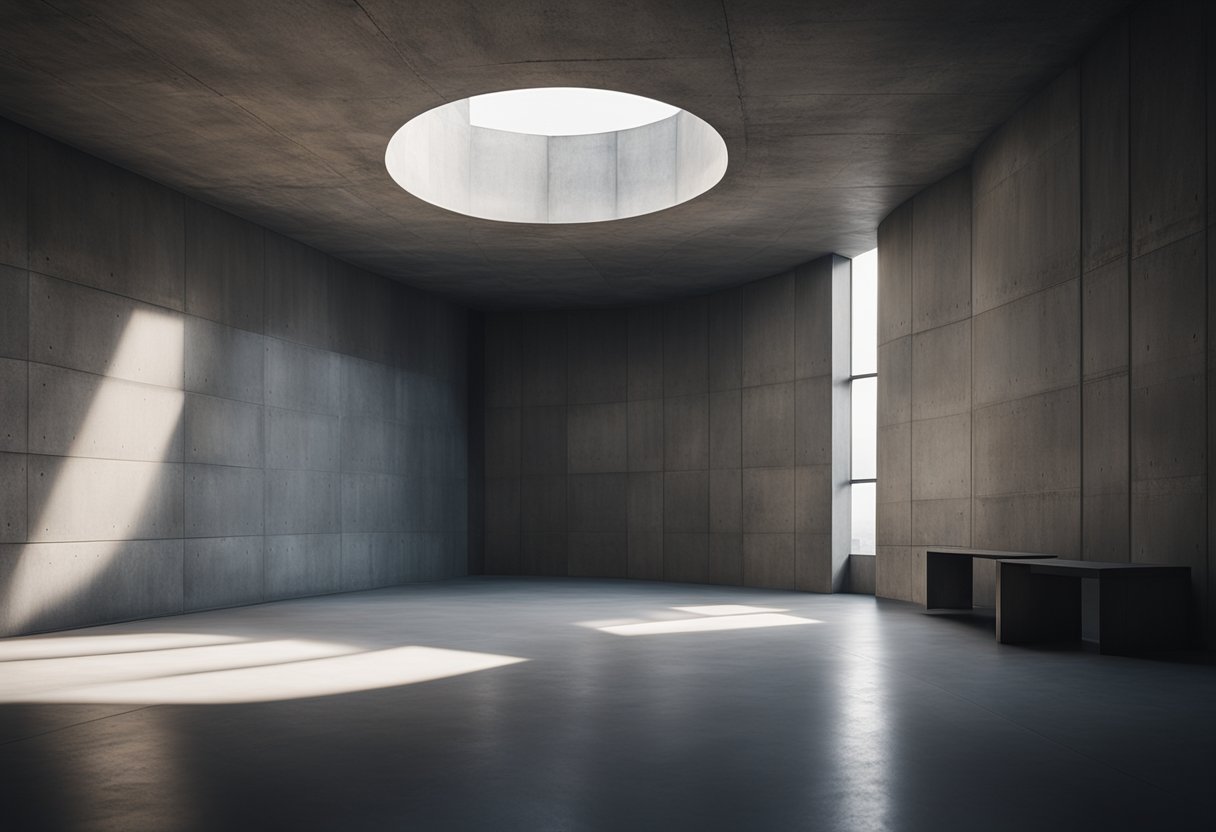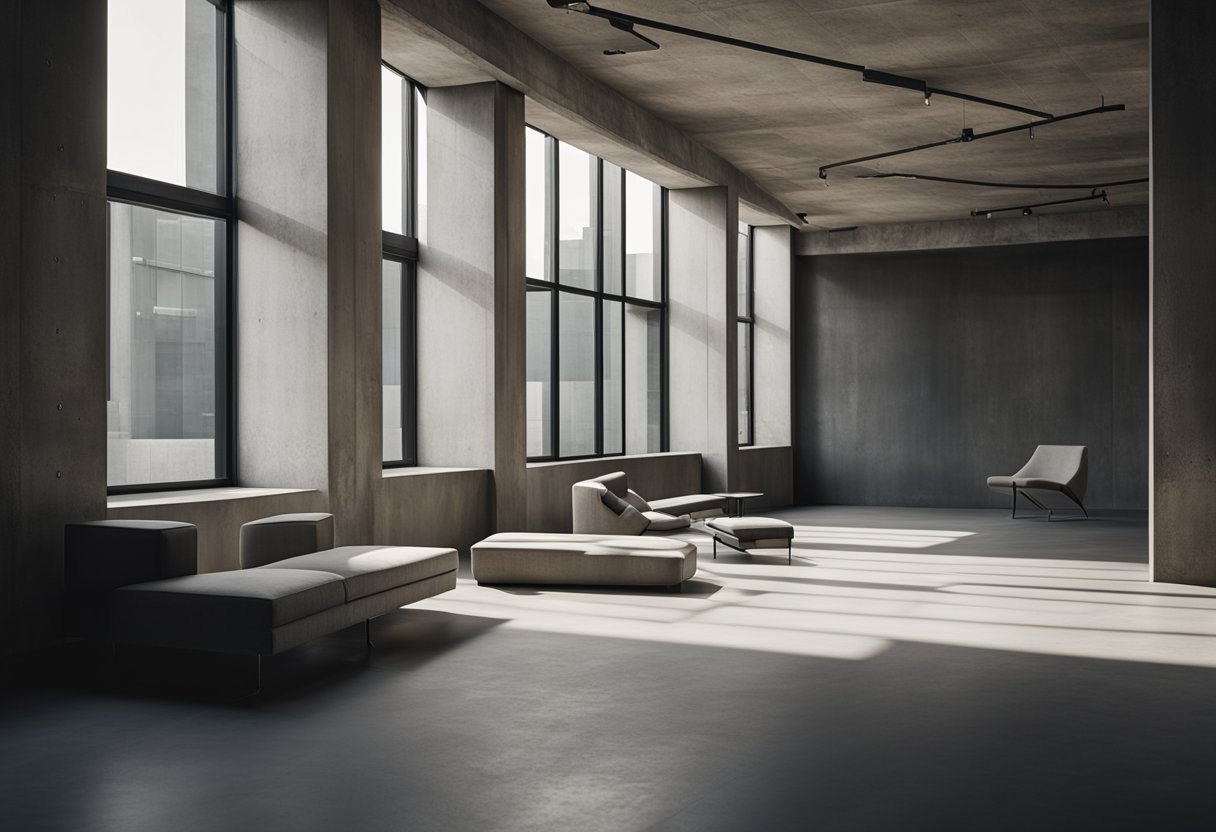Brutalist Interior Design: The Bold and Beautiful Trend Taking Over Homes
If you’re looking for a design style that’s bold, honest, and unapologetically raw, then brutalist interior design may be just what you need. Brutalism is an architectural style that emerged in the mid-20th century and is characterized by its use of béton brut or raw concrete. The style is known for its simplicity, functionality, and lack of ornamentation.

Brutalist interior design takes the same principles and applies them to the inside of buildings. The result is a space that’s stripped down to its bare essentials, with exposed concrete walls, floors, and ceilings. The aesthetic is not for everyone, but for those who appreciate the beauty of raw materials and the honesty of design, brutalist interiors can be a refreshing change from the overly polished and stylized spaces that dominate modern living.
Key Takeaways
- Brutalist interior design is a bold and unapologetically raw style that emerged in the mid-20th century.
- The style is characterized by its use of béton brut or raw concrete, simplicity, functionality, and lack of ornamentation.
- Brutalist interiors are not for everyone, but for those who appreciate the beauty of raw materials and the honesty of design, they can be a refreshing change from overly polished and stylized spaces.
Defining Brutalist Aesthetics

If you’re looking for an architectural style that celebrates raw materials and structural elements, then Brutalist Interior Design may be the perfect fit for you. This style is characterised by its use of industrial materials such as concrete, plaster, pipes, and brick, which are often left exposed to create a sense of depth and texture. In this section, we will explore the history and key characteristics of Brutalist spaces, as well as the materials and textures that are commonly used in this architectural style.
Historical Roots and Influences
Brutalist Interior Design emerged in the 1950s and 1960s, as a reaction against the ornate and decorative styles that had dominated architecture in the preceding decades. It was heavily influenced by the French-Swiss architect Le Corbusier, who championed the use of béton brut (raw concrete) in his designs. The term “Brutalism” was coined by the British architects Alison and Peter Smithson, who used it to describe their design for the Hunstanton School in Norfolk, England.
Key Characteristics of Brutalist Spaces
One of the defining features of Brutalist Interior Design is the use of raw materials and industrial textures. Concrete is a particularly popular choice, and is often left exposed to create a sense of authenticity and ruggedness. Structural elements such as geometric shapes and textured surfaces are also common, and can be used to create a sense of depth and visual interest.
Materials and Textures
In addition to concrete, Brutalist Interior Design also incorporates other raw materials such as wood, plaster, and porous concrete tables. Industrial materials such as pipes and cement are also used to create a sense of rawness and authenticity. Textiles and organic accents such as plants and natural light can be used to soften the overall aesthetic and create a more welcoming atmosphere.
Incorporating Nature
While Brutalist Interior Design is often associated with a stark and industrial aesthetic, it is also possible to incorporate natural elements into the design. Plants, for example, can be used to soften the overall aesthetic and create a more welcoming atmosphere. Natural light is also an important consideration, as it can help to highlight the textures and materials used in the space. Sustainable materials such as reclaimed wood and recycled materials can also be incorporated into the design, to create a more eco-friendly and socially responsible space.
In summary, Brutalist Interior Design is an architectural style that celebrates raw materials, structural elements, and industrial textures. By incorporating elements such as concrete, wood, and natural light, it is possible to create a space that is both rugged and welcoming. Whether you’re designing a Berlin apartment or a commercial space, Brutalist Interior Design is a style that is sure to make a bold statement.
Brutalism in Modern Living

If you’re looking to add a touch of luxury to your home, you might not immediately think of brutalist interior design. However, the unique beauty of this style, with its exposed concrete walls and industrial metal sculptures, is becoming increasingly popular in modern living spaces.
Furniture and Decor
When it comes to furniture and decor, brutalist interiors often feature minimalist designs with clean lines and a focus on imperfections. The Rick Owens bronze table is a perfect example of this, with its rough edges and elegant sheen. You might also find furry heels and shearling coats to add a touch of warmth and texture to the space.
Colour and Light
Brutalist interiors often feature a monochromatic color scheme, with a focus on blacks, greys, and whites. Exposed bulbs and industrial lighting fixtures can add a touch of elegance to the space. The Khaite runway show is a great example of how to incorporate this style into fashion with its black clothing racks and elegant lighting.
Adapting to Contemporary Spaces
While brutalist interiors were initially designed for large public spaces, they can also be adapted to contemporary living spaces. For example, the Neo-Brutalist Manhattan loft project features a minimalist aesthetic with exposed concrete walls and a focus on clutter-free living. Similarly, the Park City, Utah mountain home incorporates natural materials and a focus on simplicity to create a warm and inviting space.
Influence on Fashion and Lifestyle
Brutalism is not just limited to interior design. The style has also made its way into the fashion world, with designers like Rick Owens and Khaite incorporating elements of the style into their collections. Architect Griffin Frazen cites brutalism as one of his main influences, and his designs often feature clean lines and a focus on craftsmanship. Keith McNally’s London Soho store is a great example of how to incorporate brutalist elements into a retail space, with its exposed concrete walls and minimalist design. Giampiero Tagliaferri’s elegant sheen collection also features a touch of brutalism, with its focus on minimalism and clean lines.
Overall, brutalist interior design is a unique and exciting style that can add a touch of elegance and warmth to any living space. Whether you’re looking to create a minimalist aesthetic or incorporate natural materials, this style has something to offer for everyone.
Frequently Asked Questions

What are the defining characteristics of brutalist interior design?
Brutalist interior design is characterized by its raw, rough, and unpolished aesthetics. It emphasizes the use of raw materials such as concrete, steel, and glass, which are often left exposed to create a sense of industrial beauty. The design style also features bold geometric shapes, a monochromatic colour palette, and a minimalist approach to decor.
How can one incorporate brutalist design elements into a home interior?
To incorporate brutalist design elements into a home interior, you can start by introducing raw materials such as concrete, steel, and glass. You can also use bold geometric shapes, such as angular furniture and lighting fixtures. A monochromatic colour palette, featuring shades of grey, black, and white, can also help create a brutalist aesthetic. Minimalist decor and accessories, such as industrial-style lamps and sculptures, can also add to the overall feel of the space.
What types of materials are commonly used in brutalist-inspired interiors?
Brutalist-inspired interiors often feature raw and industrial materials such as concrete, steel, and glass. These materials are left exposed to create a sense of rough beauty. Other materials that are commonly used in brutalist design include wood, stone, and leather.
Can brutalist and minimalist design aesthetics be effectively combined?
Yes, brutalist and minimalist design aesthetics can be effectively combined. Both styles share a focus on simplicity, functionality, and clean lines. By incorporating raw materials and bold geometric shapes into a minimalist design, you can create a unique and striking space that is both functional and beautiful.
What makes brutalist furniture stand out in modern interior settings?
Brutalist furniture stands out in modern interior settings due to its unique and unconventional design. It often features bold geometric shapes, raw materials, and a minimalist approach to decor. This makes it a perfect choice for those who want to add a touch of industrial beauty to their home.
Why might some people have a strong aversion to brutalist design?
Some people might have a strong aversion to brutalist design due to its rough and unpolished aesthetics. The use of raw materials such as concrete and steel can create a sense of coldness and harshness, which might not be to everyone’s liking. Additionally, the minimalist approach to decor might make some people feel that the space lacks warmth and personality.



